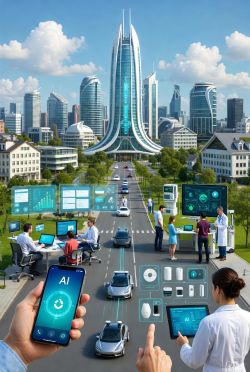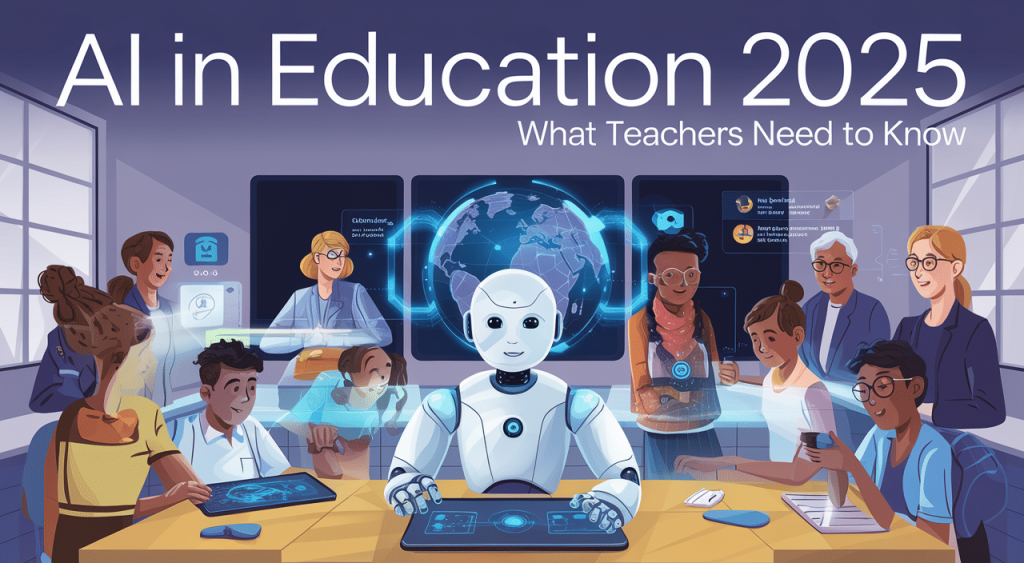
In 2025, artificial intelligence (AI) has seamlessly integrated into our daily routines, transforming mundane tasks into efficient, personalized experiences. From the devices in our pockets to the vehicles on our roads, AI is driving innovation across multiple sectors, enhancing productivity, safety, and convenience. This blog explores key areas where AI is making a profound impact, backed by recent advancements and real-world applications. We’ll break it down step by step, highlighting how AI functions in each domain and its benefits for everyday users.
AI in Smartphones: Your Pocket-Sized Intelligent Assistant
Smartphones have evolved from simple communication tools to AI-powered companions that anticipate your needs. In 2025, premium devices like the Samsung Galaxy S25 Ultra, Apple iPhone 17 Pro, and Google Pixel 9 Pro lead the charge with advanced on-device generative AI capabilities. Here’s a step-by-step look at how AI is revolutionizing smartphone usage:
- Data Collection and Learning: AI algorithms gather data from user interactions, such as app usage, location, and preferences, while respecting privacy through on-device processing.
- Real-Time Personalization: Using machine learning models, the phone suggests apps, adjusts battery life, or enhances camera features. For instance, AI improves photo editing by automatically removing backgrounds or generating captions.
- Voice and Conversational AI: Assistants like enhanced Siri or Google Gemini handle complex queries, schedule tasks, or even summarize emails, making interactions more natural and efficient.
- Predictive Features: AI prolongs battery life by optimizing power consumption and enhances security with facial recognition that adapts to changes in appearance.
The global AI smartphone market is projected to grow from USD 90.8 billion in 2025 to USD 854.2 billion by 2034. This integration not only boosts user experience but also sets the stage for AI to become central to mobile computing.

AI in Smart Homes: Creating Intuitive Living Spaces
Smart homes in 2025 leverage AI and IoT to create energy-efficient, secure environments that adapt to your lifestyle. The global smart home market is expected to reach $150 billion by 2025, with AI at its core. Step by step, here’s how AI powers this transformation:
- Sensor Integration: Devices like thermostats and cameras collect environmental data, such as temperature, motion, and energy usage.
- Data Analysis: AI processes this data to learn patterns, such as your preferred lighting at dusk or optimal heating schedules.
- Automation and Optimization: Systems automatically adjust settings—for example, smart thermostats reduce energy consumption by 10-15% through predictive algorithms.
- Enhanced Security and Convenience: AI enables features like facial recognition for locks or voice-activated controls, while predicting maintenance needs to prevent breakdowns.
AI makes homes more responsive, reducing utility bills and enhancing security, as seen in integrated hubs that learn from user behavior.

AI in Healthcare: Personalized and Proactive Care
AI is embedding itself in everyday healthcare, from diagnostics to patient monitoring, with the FDA approving numerous AI tools in recent years. By 2025, 66% of physicians use AI tools, improving patient outcomes. Step-by-step implementation includes:
- Data Gathering: Wearables and apps collect health metrics like heart rate and sleep patterns.
- Analysis and Prediction: AI uses machine learning to detect anomalies, such as early signs of diseases via imaging or predictive analytics for risk stratification.
- Personalized Interventions: Tools recommend treatments or remind users of medications, while virtual assistants handle administrative tasks like scheduling.
- Remote Monitoring and Support: AI enables telemedicine with real-time diagnostics, reducing hospital visits and streamlining care.
This results in faster diagnoses, reduced errors, and more efficient administrative processes, revolutionizing how we manage health daily.

AI in Education: Tailored Learning Experiences
Education in 2025 is personalized through AI, with tools increasing student agency and addressing diverse learning needs. The AI education market is set to grow from $7.57 billion in 2025 to $112.30 billion by 2034. Here’s the step-by-step process:
- Assessment of Needs: AI evaluates student performance through quizzes and interactions to identify strengths and gaps.
- Content Customization: Algorithms generate tailored lessons, such as adaptive math problems or language exercises.
- Interactive Support: Chatbots provide instant feedback, while virtual tutors explain concepts in real-time.
- Progress Tracking and Adjustment: Continuous monitoring allows for dynamic adjustments, ensuring optimal learning paths.
AI fosters curiosity and understanding, though challenges like cheating (up from 53% to 61% of educators reporting it) require ethical guidelines.

AI in Entertainment and Media: Customized Content Creation
AI is reshaping entertainment by personalizing experiences and streamlining production, with the market growing from $26.34 billion in 2024 to $166.77 billion by 2033. Step by step:
- Content Analysis: AI scans user preferences from viewing history and feedback.
- Recommendation Engines: Platforms like Netflix use algorithms to suggest shows, boosting engagement.
- Creation and Editing: Generative AI assists in scriptwriting, music composition, or visual effects, reducing costs by up to 30% in TV and film.
- Distribution and Monetization: AI optimizes ads and predicts trends, enhancing profitability.
This leads to hyperscale social video platforms redefining consumption, though ethical considerations around AI-generated content are key.

AI in Self-Driving Cars: Safer, Smarter Transportation
Self-driving cars are advancing toward widespread adoption in 2025, with companies like General Motors and Pony.ai leading in autonomous technology. The process unfolds step by step:
- Perception: Sensors (LiDAR, cameras) collect environmental data.
- Decision-Making: AI processes this via deep learning to interpret traffic, pedestrians, and road conditions.
- Path Planning: Algorithms calculate optimal routes, adjusting for real-time changes.
- Execution and Safety: The vehicle acts autonomously, with overrides for safety, reducing accidents through predictive features.
While full autonomy faces regulatory hurdles, level 3 systems are common, promising safer roads and economic growth.

Conclusion: Embracing the AI-Driven Future
AI’s revolution in everyday life is just beginning, with projections showing unprecedented growth across sectors. From smartphones that think ahead to cars that drive themselves, these technologies enhance efficiency while raising questions about ethics and privacy. As we move forward, staying informed and adaptable will be key to harnessing AI’s full potential. What AI innovation excites you most? Share in the comments!
